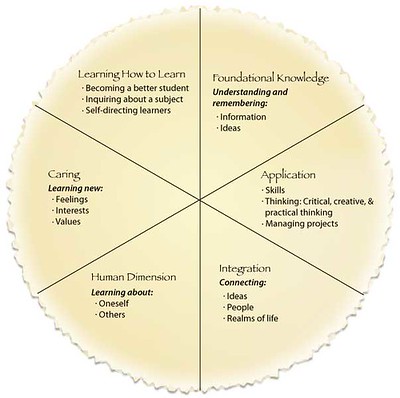Hopefully, you understand what a hybrid course is and some of the constraints you need to work within. You know that a hybrid course means that some of the seat time is replaced with online activities. You also know that you need to offer substantive interactions to count as the seat time you’ve replaced. So now it’s time to start designing, right?
Might I take a moment to suggest one instructional strategy here, before you go diving off the deep end?
- Make a Plan
I know, you’re thinking, but I have a plan. I plan to teach hybrid. I mean, what is it that your students will gain from this course. What are the learning goals and outcomes? By the end of your course, what sweet skills will your students be walking home with? Now break that down into the concepts you plan to cover each week in the class. How does week 5 tie into the overall learning goals of the course? What skill or concept are they learning and how does that connect with the end goal?
I feel like most of you have a solid handle on what you want students to learn week to week so this shouldn’t be a challenge. Determine what students need to learn from you in person, and what you could shift to an online environment. I realize that this means they won’t get as much of YOU, but I promise it will be okay. Just make yourself a little mini-map. I’ll wait here.

2. Choose the Path
Okay, now take a good look at that plan. How are you going to get there? Stop. Clear your head. Don’t think about that beautifully designed lecture you have on South American Pygmy Bat. The one you spent hours on developing the perfect PowerPoint Presentation for. You know the one I’m talking about. Stop thinking about it because I know what’s going on up there. You’re thinking – I could just record myself giving the lecture and make the students watch it. I’m going to let you in on a little secret.
Your students aren’t going to watch your 50-minute PowerPoint. Or, if they do (because you forced them to), they stopped actively paying attention about … 8 minutes into the video.
So, instead, think about, what do I need my students to learn? Why did you develop that presentation about the South American Pygmy Bat? What about the South American Pygmy Bat ties to your learning goals? (Don’t ask why I picked the South American Pygmy Bat as an animal. I’m suffering just as much as you are). Does it have to be the Pygmy Bat? Could they — go rogue and still achieve the learning goals? Focus on what they need to know.

Maybe your learning goal is actually this: students will understand the role of trophic levels in a food web focusing on how mid-level predators affect other trophic levels.
Now, how are they going to get there? What are you going to do in class to support that learning, and what activities will they do out of class to help them acquire that learning? How can you put this learning in the hands of the students in a way that is flexible and relevant?
Strategy One: Flip Your Class
Flipping your class entails offering direct instruction to students in an online space, while classroom time is used to participate in active learning activities. You can learn more about Flipping Your Classroom and Flipped Learning at the Flipped Learning Network.
Example: Provide students with readings and short lectures on trophic levels, food webs, and maybe even a shorter version of that South American Pygmy Bat presentation that places it in a food web and explains how it affects different trophic levels. In class, students can work in small groups to work on mapping out the effects pre-determined animals have on trophic levels within their food web. Outside of class, to replace seat time, students map out a food web for a specific ecosystem and share it with their peers in a discussion forum. Finally, for homework, students write a brief paper that asks them to analyze a complex problem related to food webs and trophic levels.
Strategy Two: In-Class Driver
In this design, instructors set the students up for the week during the class sessions, through lectures and discussions. Students then complete assignments and activities outside of class that helps them build on what they learned in the classroom. Part of the activities requires an interactive nature, such as asynchronous discussion forums or group work.
Example: In class, you present students with an introduction to trophic levels and food webs in class. You again might do a condensed version of your South American Pygmy Bat presentation. This prepares students for the week and frames assigned reading. Online, you provide a discussion forum where students work in groups to map out food webs for a pre-determined animal, where you provide feedback during the process. For homework, students might work on a food web for a specific ecosystem, identifying animals at different trophic levels. You might integrate some writing into that assignment, asking students to explain what happens at each level.
Time Considerations
As you start to map out this experience, it’s important to set realistic expectations for your students. In a hybrid course, you’re replacing seat time, not adding to the overall workload. So, lecturing in class and then providing another lecture for students to listen to outside of class doesn’t hit the mark because it doesn’t provide substantive interaction. And no, you can’t just tack a discussion board on that video lecture and call it a day because you’re likely overtaxing the students because it’s about replacing, not adding. So you need to think of it as a model or a framework. I really like this USC Annenberg site that explains the process of “Calculating contact hours in online and hybrid classes“. You can also check out Workload Estimator 2.0, which is the coolest tool for determining how much work you are assigning students.

Next Time
As you read through these resources, you might start thinking about how you approach this course, as an instructor. In a traditional course, you know what an instructor looks like, and you can draw from existing mental models regarding teaching. But in a hybrid course, your role changes. We’ll talk about hybrid instructor characteristics in the next issue!
Author’s Note: Shout out to Brad Coupe for helping me conceptualize the South American Pygmy Bat lesson.



